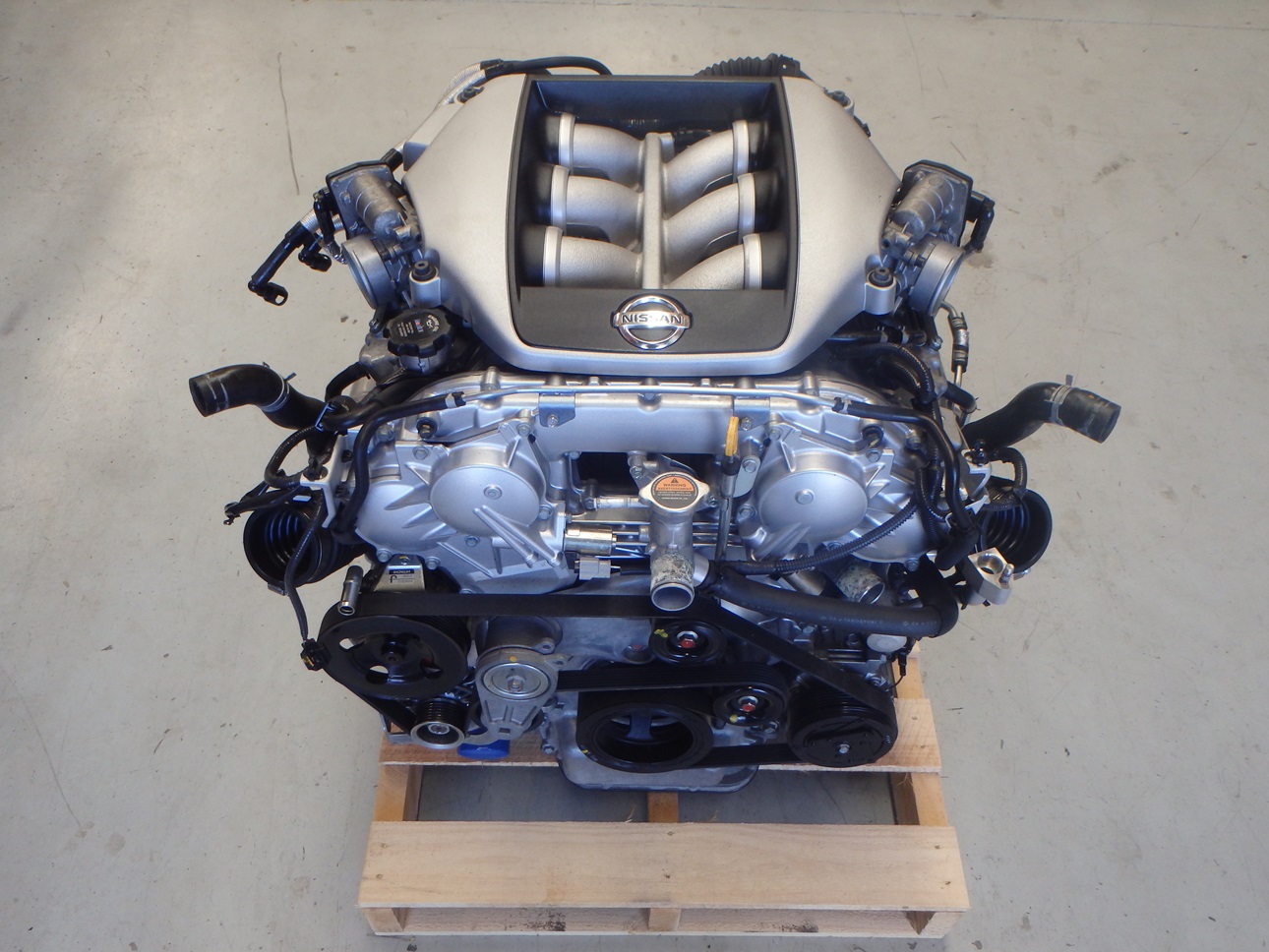What Engine Does A Gtr Have

Let's dive into the heart of the Nissan GT-R, a machine renowned for its performance and technological prowess. Specifically, we're going to break down the engine that makes it all possible: the VR38DETT. This isn’t just a matter of trivia; understanding the VR38DETT is crucial for anyone considering serious modifications, maintenance beyond basic oil changes, or even just wanting to appreciate the engineering marvel that sits under the hood.
Purpose: Why Bother?
Why spend time learning about the intricacies of the VR38DETT? Well, knowledge is power. Whether you're troubleshooting a nagging issue, planning performance upgrades, or simply want to be an informed owner, understanding the engine's architecture and function is essential. This level of understanding allows you to:
- Diagnose problems more effectively: Knowing how the systems interrelate can help pinpoint the root cause of an issue.
- Plan modifications intelligently: Understanding the engine's limitations and potential allows for safer and more effective performance enhancements.
- Perform preventative maintenance: Identifying potential weak points can help you avoid costly repairs down the road.
- Communicate effectively with mechanics: Being able to speak the language of engines ensures clearer communication and reduces the risk of misunderstandings.
Ultimately, delving into the VR38DETT empowers you to take control of your GT-R ownership experience.
Key Specs and Main Parts of the VR38DETT
The VR38DETT is a 3.8-liter (3799 cc) V6 engine with a 60-degree bank angle. The "VR" signifies the engine family, "38" denotes the displacement (3.8 liters), "D" indicates dual overhead camshafts (DOHC), "E" signifies electronic fuel injection, and "TT" stands for twin-turbocharged. This is a critical configuration for understanding its performance characteristics.
Core Components:
- Cylinder Block: Made from cast aluminum alloy, providing a strong yet lightweight foundation. It houses the cylinders and crankshaft. The block design incorporates features for increased rigidity and reduced vibration.
- Cylinder Heads: Also cast aluminum alloy, each head houses two camshafts (DOHC). They are designed for efficient airflow and combustion.
- Crankshaft: A forged steel crankshaft, known for its strength and durability, converts the linear motion of the pistons into rotational motion.
- Pistons: Forged aluminum pistons, designed to withstand high combustion pressures. They feature optimized shapes and coatings for reduced friction and improved heat dissipation.
- Connecting Rods: High-strength forged steel connecting rods link the pistons to the crankshaft, transmitting power.
- Turbochargers: Two IHI turbochargers, one for each bank of cylinders, force more air into the engine, significantly boosting power output. They are mounted close to the exhaust manifolds to minimize lag.
- Intercoolers: Air-to-air intercoolers cool the compressed air from the turbochargers, increasing its density and further enhancing performance.
- Fuel Injection System: Electronic fuel injection (EFI) system precisely meters fuel delivery to each cylinder, optimizing combustion efficiency. High-flow fuel injectors are essential for supporting the engine's high power output.
- Ignition System: Direct ignition system with individual ignition coils for each cylinder provides precise spark timing and reliable combustion.
- Valvetrain: DOHC (Dual Overhead Camshafts) operate four valves per cylinder (2 intake, 2 exhaust). Variable valve timing (VVT) optimizes valve timing for improved performance and fuel efficiency across the RPM range.
Key Specs (Vary Slightly by Model Year):
- Displacement: 3.8L (3799cc)
- Configuration: V6
- Aspiration: Twin-Turbocharged
- Horsepower: Ranges from 480 hp (early models) to 600 hp (Nismo editions)
- Torque: Ranges from 430 lb-ft to 481 lb-ft
- Compression Ratio: Typically around 9.0:1
How It Works
The VR38DETT operates on the four-stroke combustion cycle: intake, compression, combustion (power), and exhaust. The turbochargers force air into the cylinders, increasing the amount of oxygen available for combustion. This allows for more fuel to be burned, resulting in a significant increase in power. The intercoolers cool the compressed air, further increasing its density and improving combustion efficiency.
The DOHC valvetrain, coupled with variable valve timing (VVT), allows for precise control over the intake and exhaust valves, optimizing airflow and combustion across a wide range of engine speeds. The electronic fuel injection (EFI) system ensures precise fuel delivery, maximizing power and efficiency.
The engine's ECU (Engine Control Unit) constantly monitors various parameters, such as air temperature, engine speed, and throttle position, and adjusts fuel injection, ignition timing, and turbocharger boost to optimize performance and efficiency.
Real-World Use: Basic Troubleshooting Tips
Even with its robust design, the VR38DETT can experience issues. Here are a few basic troubleshooting tips:
- Loss of Power: Check for boost leaks in the intake system, malfunctioning turbochargers, or issues with the fuel system (fuel pump, injectors). A diagnostic scan tool can help identify fault codes.
- Rough Idle: Could be caused by vacuum leaks, faulty ignition coils, or dirty fuel injectors.
- Overheating: Check coolant levels, radiator condition, and thermostat function. A faulty water pump can also cause overheating.
- Unusual Noises: Investigate immediately. Knocking sounds could indicate serious engine damage (e.g., rod knock), while whining noises could suggest turbocharger issues.
Important: Always consult a qualified mechanic for complex issues. The VR38DETT is a sophisticated engine, and attempting repairs without proper knowledge and tools can lead to further damage.
Safety: Risky Components
Working on the VR38DETT involves inherent risks. Pay particular attention to the following:
- Turbochargers: Can reach extremely high temperatures. Allow them to cool down completely before touching them.
- Fuel System: Fuel is highly flammable. Disconnect the fuel pump relay and relieve fuel pressure before working on the fuel system.
- Electrical System: Disconnect the battery before working on any electrical components.
- High-Pressure Oil System: The engine's oil system operates at high pressure. Be cautious when disconnecting oil lines.
- Moving Parts: Keep hands and tools clear of moving parts when the engine is running.
Always wear appropriate safety gear, including eye protection, gloves, and hearing protection.
